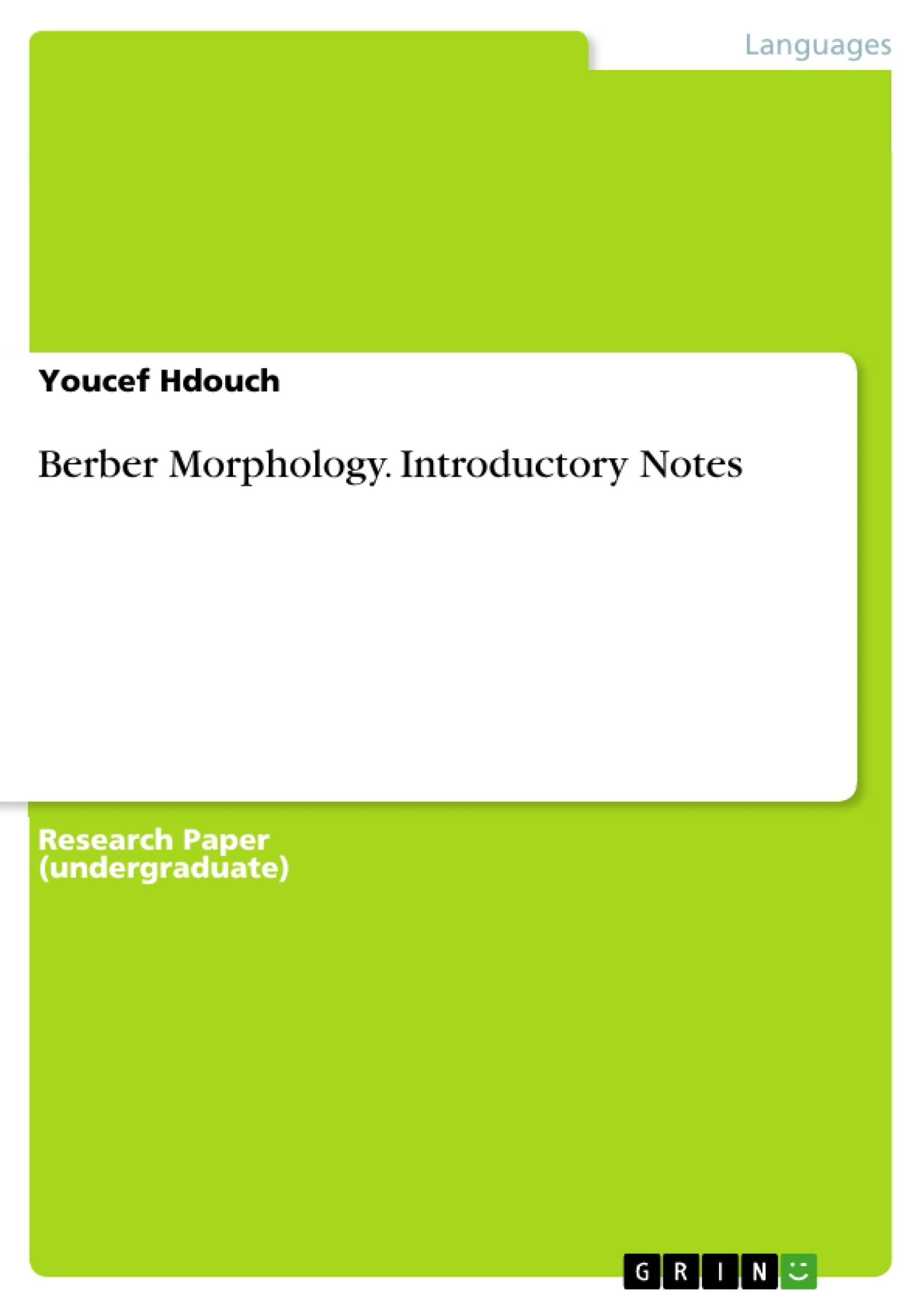Berber, an Afro-asiatic language spoken in North Africa, is one of the endangered languages in the area. The reason for this is that globalisation has turned attention towards hyper-central and super-central languages like English and French. Therefore, it is judicious to present a synopsis of its linguistic aspects inviting scholars from different schools to investigate issues relating to segmental, suprasegmental and word formation processes.
In particular, this article aims to shed light on aspects of Berber nominal and verbal morphology and affixation. As far as the former is concerned, gender and number will be highlighted. As to second, verb structure will be analysed, peculiarities of aspectual stems and derivation pointed out. Finally, we conclude by considering the different affixes that attach to verb stems.
Inhaltsverzeichnis (Table of Contents)
- Introduction
- 1 – Nominal Morphology
- 1.1 Subcategories of Nouns
- 1.2- Gender and Number Inflections in Berber
- 1.2.1- Gender
- 1.2.2 – Number
- 2. – Verbal Morphology
- 2.1- The Aspectual Stems
- 2.1.1 – The Unmarked Stem
- 2.1.2 – The Perfect Stem
- 2.1.3 – The Intensive Stem
- 2.2. – Derived Verbs
- 2.2.1 –The Causative
- 2.2.2- The Reciprocal
- 2.2.3- The Passive
- 2.3 – Affixes
- 2.3.1 – Personal Pronouns
- 2.3.1.1- Personal Subject Pronouns
- 2.3.1.2 – Direct and Indirect Objects
- 2.3.1.3 – The Orientation Index
- 2.3.1 – Personal Pronouns
Zielsetzung und Themenschwerpunkte (Objectives and Key Themes)
This article provides an overview of Berber nominal and verbal morphology, focusing on the formation of gender and number in nouns, and the aspectual stems, derived verbs, and affixes in verbs. The text aims to provide a comprehensive description of these linguistic aspects for readers unfamiliar with Berber.
- Subcategories of Nouns in Berber: Basic and Derived
- Gender and Number Inflections in Berber Nouns: Masculine/Feminine and Singular/Plural
- Aspectual Stems in Berber Verbs: Unmarked, Perfect, and Intensive
- Derived Verbs in Berber: Causative, Reciprocal, and Passive
- Affixes in Berber Verbs: Personal Pronouns (Subject and Object) and Orientation Indices
Zusammenfassung der Kapitel (Chapter Summaries)
The first chapter focuses on Berber nominal morphology, exploring the distinction between basic and derived nouns, as well as the processes involved in the derivation of nouns from other noun or verb categories. It then dives into the morphology of gender and number, examining the binary gender system and the various ways feminine nouns are derived from masculine nouns. The chapter concludes with a detailed analysis of plural formation in Berber nouns, exploring different suffixation processes, stem modification, and the combination of these processes. The second chapter focuses on Berber verbal morphology, outlining the different aspectual stems: unmarked, perfect, and intensive. It details the processes by which these stems are derived from the unmarked stem and provides examples of each. The chapter then explores the derivation of verbs from other verbs, highlighting the causative, reciprocal, and passive formations. Lastly, it delves into the morphology of affixes, particularly personal pronouns (subject and object) and orientation indices, explaining their function and the processes by which they are attached to verb stems.
Schlüsselwörter (Keywords)
The text focuses on the morphology of Berber, encompassing key themes such as the subcategories of nouns, gender and number inflections in nouns, aspectual stems in verbs, derivation of verbs, personal pronouns in verbs, and orientation indices.
- 2.1- The Aspectual Stems
- Citation du texte
- Youcef Hdouch (Auteur), 2016, Berber Morphology. Introductory Notes, Munich, GRIN Verlag, https://www.grin.com/document/334981



